Last Chance: The Annual Orchid Show Soars at the New York Botanical Garden
The vibrant colors of Mexico come to NYC for a unique Orchid Show at NYBG!


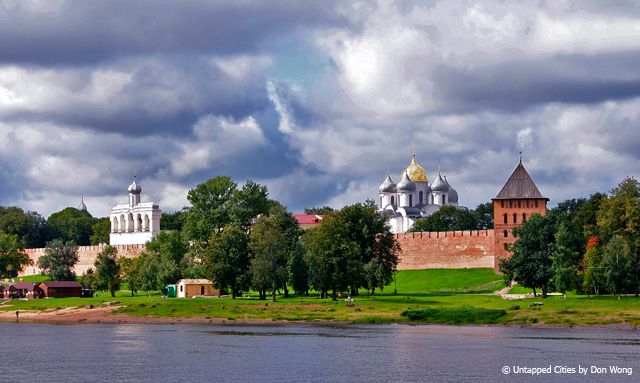
Volkhov River, Krelim & St Sophia in Veliky Novgorod
Our present day image of Russia is largely colored by its Soviet history: from Cold War nuclear arms race to Gorbachev’s Glasnost and Perestroika; the fall of the communist union in 1991 and Vladimir Putin’s KGB past. However Russia had a long and rich existence before Lenin’s 1917 October Revolution founded the Marxist state. To get a glimpse of this Russia, it is worthwhile to make a detour to the rolling countryside between Moscow and St Petersburg, where the city of Veliky Novgorod lies in slumber like a forgotten Byzantine jewel.
Novgorod refers to “New City” , though the 9th century UNESCO world-heritage site is one of the oldest cities in Russia. Textbook Russian history relates the story of how Novgorod was essentially where ‘Russia’ began: as the first capital of Kievan Rus, a medieval polity ruled by the Varangian Norsemen from the 9th to 13th century who later moved the capital to Kiev, in present day Ukraine. After the fall of Kievan Rus to the Mongol Tartars in ~1240, Novgorod became the center of the Novgorod Republic, a medieval state that stretched from the Baltic Sea to the Ural Mountains. For 600 years between its founding in 862 and the fall of the Novgorod Republic in 1478, this city state along the mighty Volkhov River was Russia’s most advanced artistic and political center.
Novgorod is easily accessible by train or car along the major Moscow- St Petersburg axis. Perhaps harkening to its previous status as a trading hub, the people of the town (about 200,000 inhabitants) are friendly and warm.
Like most ancient cities, Novgorod grew on the back of trade, specifically between Scandinavia and Central Asia. This trade route leveraged the unique northward flow of the Volkhov River towards Europe’s largest freshwater mass, Lake Ladoga and Finland, as opposed to the other channels flowing south towards the Black and Caspian seas. Approaching Novgorod by river, the 9th century Kremlin (fort) comes to view, with the five domed silhouette of Cathedral of St. Sophia as its centerpiece. Built in 1052, St. Sophia has a fortress-like exterior, its onion-domes supposedly added in the 14th century.
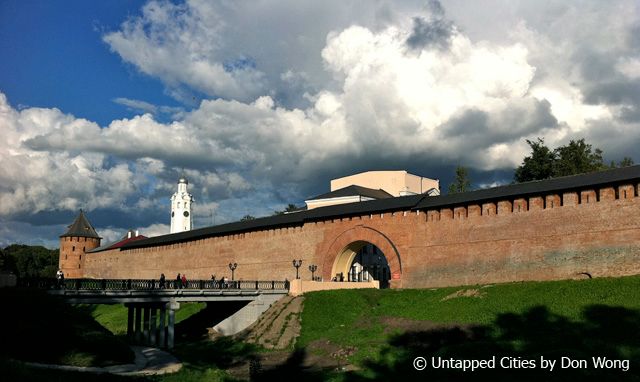
Kremlin Wall and Moat – Veliky Novgorod
Walking within the Kremlin, one steps back in time. Present day Novgorod is green, pretty and tranquil. A millennia ago, the fortress would have been the bustling center of worship, trade and warfare. Now it is an oasis of calm, the silence occasionally broken by the laughter of school children on a history excursion.
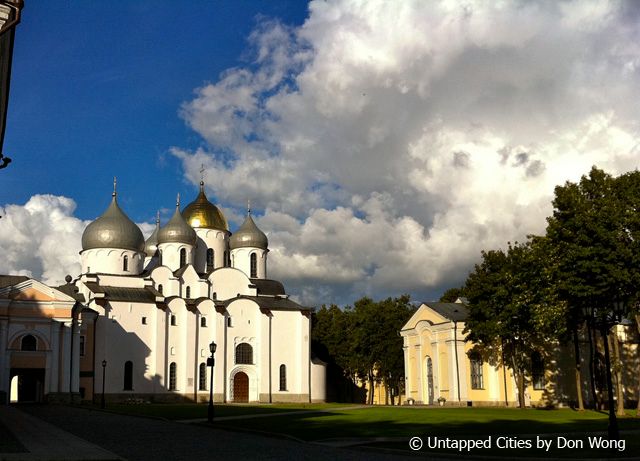
Cathedral of St Sophia – Veliky Novgorod
Perhaps the clearest reminder of the city’s illustrious past is the massive, 300-tonne Millennium of Russia sculpture that was unveiled in 1862 to commemorate the 1000th anniversary of the founding of Russia by the Varangian Prince Rurik’s arrival at Novgorod. Mother Russia crowns the top, with the who’s who of Russian history (from Peter the Great to Ivan the Terrible) circling the rungs.
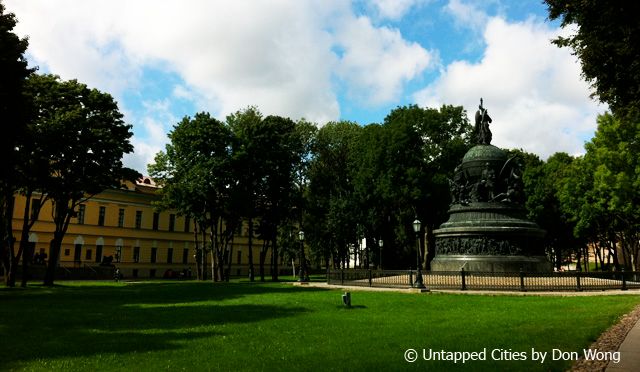
Millennium of Russia – Veliky Novgorod
While the Kremlin is the historical heart of the town, we feel that the true beauty of Novgorod lies across the banks of the Volkhov river at what is known as Yaroslav’s Court. The site is named after Yaroslav the Wise who was Prince of Novgorod from 1010-1019. Yaroslav established the first code of laws, Russia’s version of the Magna Carta.
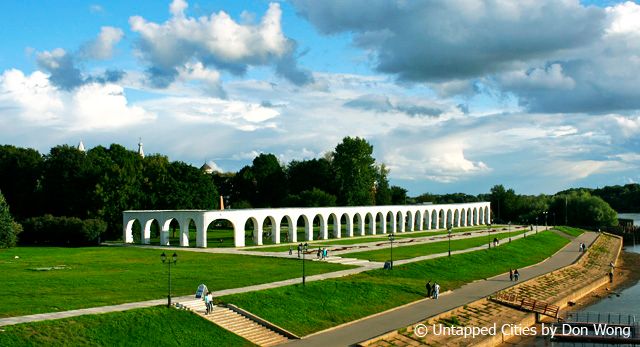
Yaroslav’s Court – Veliky Novgorod
Distinguished by the remnants of a 17th arcade facing the river, Yaroslav’s Court is now a vast green garden dotted by an array of domed churches built by 13th-16th century merchant guilds, mostly in various stages of disrepair.
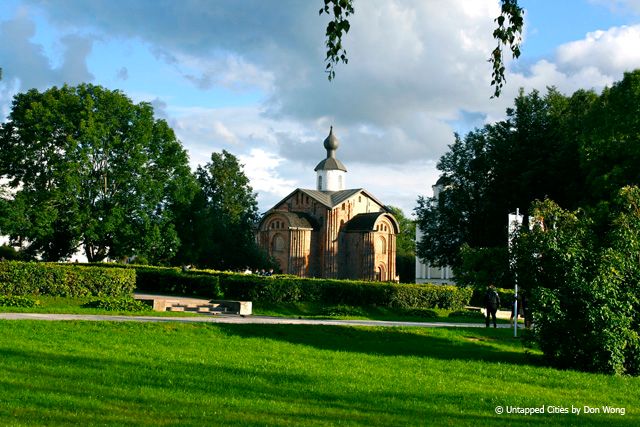
Church of St Paraskeva Piatnitsa – Veliky Novgorod
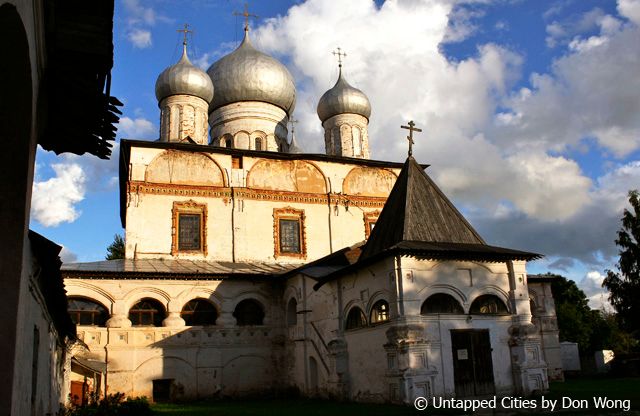
Church of Our Lady of the Sign – Veliky Novgorod
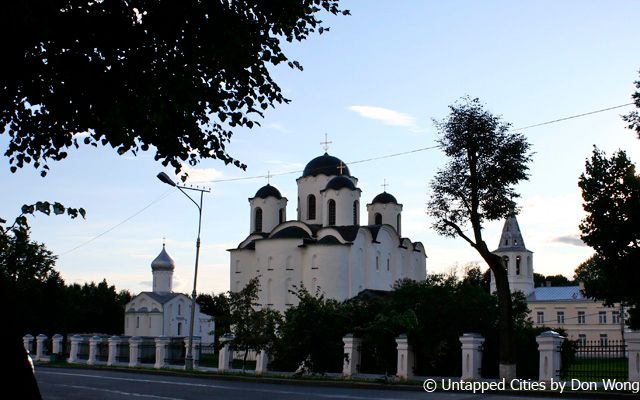 Court Cathedral of St Nicholas – Veliky Novgorod
Court Cathedral of St Nicholas – Veliky Novgorod
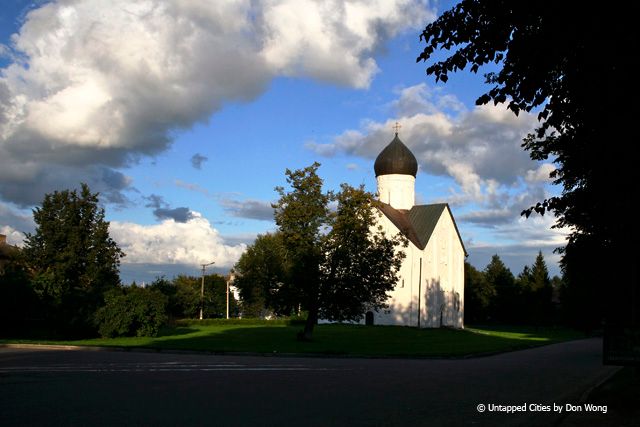
Church of Transfiguration – Veliky Novgorod
The gardens of Yaroslav’s Court pan out to a peaceful residential neighborhood, housing a series of small retail shops. Interspersed in this estate are more merchant guild churches, some in open greens, like the Church of Transfiguration; others in semi-hidden courtyards, such as the grand but derelict Church of Our Lady of the Sign.
Follow Untapped Cities on Twitter and Facebook! Get in touch with the author @donmich15.
Subscribe to our newsletter